Everything Everywhere All at Once
Part 4 of a story in four parts about what climate change means for real estate and what we can do about it.

Why, when it comes to real estate, tackling climate change means changing how we learn.
With a scale only matched by its complexity, climate change has been described as a “wicked problem par excellence.” Its social, political, and environmental implications go far beyond the disciplines of climate physics. Mitigating the causes of global warming and preparing for its impacts requires comprehensive changes in the way we live and how we do business.
Of all the interactions between human activity and climate change, perhaps none are more complex than the relationships between the warming planet and the things we’ve built. Every feature of our built environment has a relationship with the climate.
That’s why some academics believe we can no longer afford to separate fields of learning into rigid, prescribed pathways.
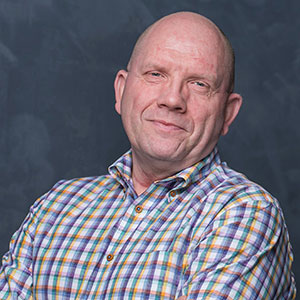
“The issue with real estate is that it may be the most complex systemic issue we face because there are so many different actors that have to come together,” says Glen Dowell, Henrietta Johnson Louis Professor of Management at the Samuel Curtis Johnson Graduate School of Management. “That means having technical solutions is nowhere near enough. You have to have an understanding of policy and how to work together between the public and the private sector at very local levels.”
In other words, filtering expertise into carefully prescribed silos can prevent business and community leaders from forming the holistic perspective required to build climate resilience into the built environment. That means not only do we have to change the way we live and work—we must change the way we learn. And it is that which informs the ethos behind Cornell’s new Paul Rubacha Department of Real Estate, established in June 2022 following an endowment of $30 million from Paul Rubacha ’72, MBA ’73, co-founder of Ashley Capital, one of the largest privately held real estate investment companies in the U.S.
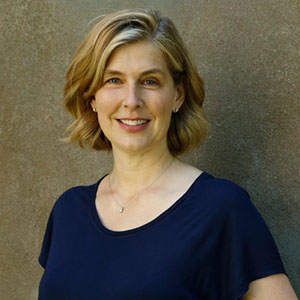
“Real estate is necessarily a multi-disciplinary endeavor,” says Suzanne Lanyi Charles, associate professor in the Department of City and Regional Planning at Cornell’s College of Architecture, Art and Planning (AAP) and the Paul Rubacha Department’s acting chair. “It requires engagement with design, planning, finance, asset management, policy, law and more. The Rubacha Department is truly unique in that it brings together diverse disciplines to equip our graduates to become future leaders who squarely address the most pressing issues.
“The world faces unprecedented climate, social, and economic crises, and real estate professionals are key figures in creating and maintaining the built environment,” Charles continues. As she sees it, her department has a mission to “educate transformational real estate practitioners who will go on to positively affect the world.”
To understand what this means in practice requires understanding the interactive relationship between buildings, the environment, and society.
Real estate IRL
“Being prepared for the climate change impacts of today and the future is very multifactorial,” says Jeanne Varney, senior lecturer at the Cornell Peter and Stephanie Nolan School of Hotel Administration. There’s little value to teaching academic concepts without their real-world applications, Varney explains, so from the get-go, students must get to grips with the practical aspects of the work.
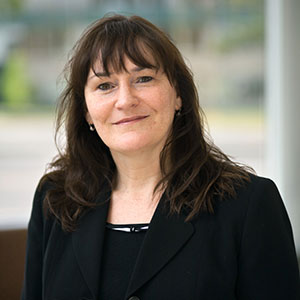
For example, Varney says, “students should know the basics of how the building works and what can be done to operate the building at its optimal efficiency. While students don’t become fully-fledged engineers, they are taught to use their knowledge of the basics to ask the right questions of the property management team.”
Building management requires familiarity with all the environmental impacts of buildings, from energy and water consumption to waste management and interior product selection. Students learn energy consumption calculation formulas, and how to perform life cycle costings to demonstrate the efficiency of different equipment and practices.
“These are critical for real estate professionals to understand because it not only directly impacts the building’s environmental footprint, but it also directly impacts the utility bill,” Varney says. In the context of hotels, any savings from the utilities department is money that could flow directly to the bottom line for the business. “That gives a positive outcome for both the environment and the business,” she adds.
A complex web of interacting systems
Understanding how buildings work and the impact their energy use has on the environment and the bottom line are important, and so is getting hands-on experience in what goes into managing a building and its carbon footprint. Those also constitute discrete aspects of a host of complex, interacting systems that the field of real estate encompasses. Holistically, real estate involves a web of relationships between enterprise, the political sphere, and society.
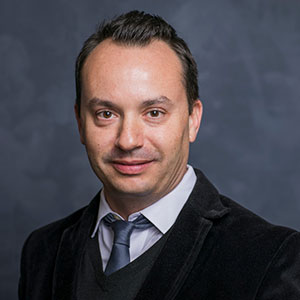
“Our students learn that real estate is a complex topic and that a small change to any of the multiple aspects of the process will affect the entire ecosystem in complex and sometimes unpredictable ways,” says Daniel Lebret, senior lecturer in real estate finance at the Cornell Peter and Stephanie Nolan School of Hotel Administration and former director of graduate studies for the Cornell Baker Program in Real Estate (2021-22).
Sixty Cornell Baker Program in Real Estate students got a full picture of the complexity of real estate ecosystems when they participated in a trek to Miami in April 2022 organized by Lebret and Brad Wellstead, a lecturer at the Nolan Hotel School. They had opportunities to interact with business leaders, researchers, and local officials and engage in conversations about sustainable urban development and climate resilience. Meteorologist and Cornell alumnus John Toohey ’84, aka John Morales (who is featured in Castles in the Sand, the first stories in this series), was one of the climate change experts they met with. Baker Program students complete two real estate case study trips and a summer professional internship in addition to coursework.
Lebret discusses a diagram from James A. Graaskamp, the late professor of real estate at the University of Wisconsin–Madison, a driving force in pioneering the academic study of the sector who centered ethics in his teaching. It’s an elegant three-point matrix of circles and arrows, indicating the various interdependencies between the private sector, the public sector, and tenants. Lebret boils the diagram down to its core lesson: In real estate, the land sits at the center, while three powerful social and economic forces—the private sector, the public sector, and tenants—each interact around it.
“The very core of the Baker Program in Real Estate and of the Paul Rubacha Department in Real Estate is to bring together the SC Johnson College of Business, representing the private sector, and the College of Architecture, Art, and Planning, representing the public sector,” Lebret says. “I think this approach will prove to be right, given what’s coming.”
Systems within systems
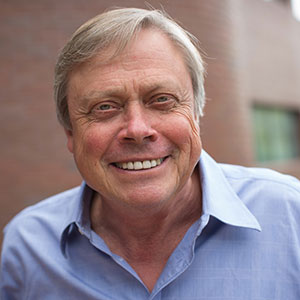
A consistent message has emerged throughout the testimonies of the experts interviewed for this story series: To succeed in this new, less-certain age, real estate practitioners must develop a holistic, socially responsible, climate-compatible perspective. To neglect this bigger picture exposes the industry to astronomical financial risks, leaves communities at the mercy of extreme weather events and the depredations of powerful interests, and consigns the industry to stagnation and irrelevance.
Of course, in the face of the huge systemic changes needed, one university cannot be expected to do it all. In the view of Robert Howarth, Cornell’s David R. Atkinson Professor of Ecology and Environmental Biology, all students, and more broadly the general public, must be granted a far broader understanding of what our changing climate has in store.
“I firmly believe that every educated person in the world should have a basic grasp of the science and politics behind global climate disruption and solutions to this existential threat,” Howarth says. “The solutions are there, and they are cost-effective. Yet powerful interests deliberately confuse this through disinformation campaigns. We at Cornell are openly discussing these issues, and fully engaging our students in debate around them.”

Grant Behnke ’17, director of investments and ESG for Rockbridge Capital and a graduate of the Peter and Stephanie Nolan School of Hotel Administration, concurs. As he points out, without greater awareness of the implications of climate change, it will be hard to secure the cooperation and understanding of communities when it comes to real climate-resilient real estate projects. “I think we need a higher level of awareness and education on behalf of consumers to be able to decipher and understand these things with a high degree of clarity,” he says.
“You can’t just wave a magic wand,” adds Dowell. “It will take a lot of political will, and a lot of social movement actions and persuasion to make changes even at the local level, and to overcome the barriers that, in some cases, were put there for very good reasons but are now no longer helpful.”
Cornell’s pitch, then, is a bold one. The university aims to play a key role in reshaping the way we understand and prepare for the challenges facing real estate in the 21st century. To do that, multiple departments and disciplines will need to collaborate in new and innovative ways. Old assumptions will be challenged; 20th century business-as-usual practices will need to be examined, dissected and, where necessary, left behind. Because, like it or not, change is coming.
As another Cornellian, Bill Nye ’77, succinctly puts it: “Make no small plans; dream mighty things. I feel if we get enough people engaged in climate change, we will get enough people to change the world.”
Climate change and its impact on real estate: A story in four parts
Learn more about the impact of climate change on real estate in other stories in this series:
- Castles in the Sand: What climate change means for real estate, and what we can do about it.
- Dynamic Properties: From investment opportunities to risk protection and energy savings, climate change awareness is sparking transformation in real estate.
- Redressing the balance: Equitable approaches to sustainable real estate
- Everything Everywhere All at Once: Why, when it comes to real estate, tackling climate change means changing how we learn.
